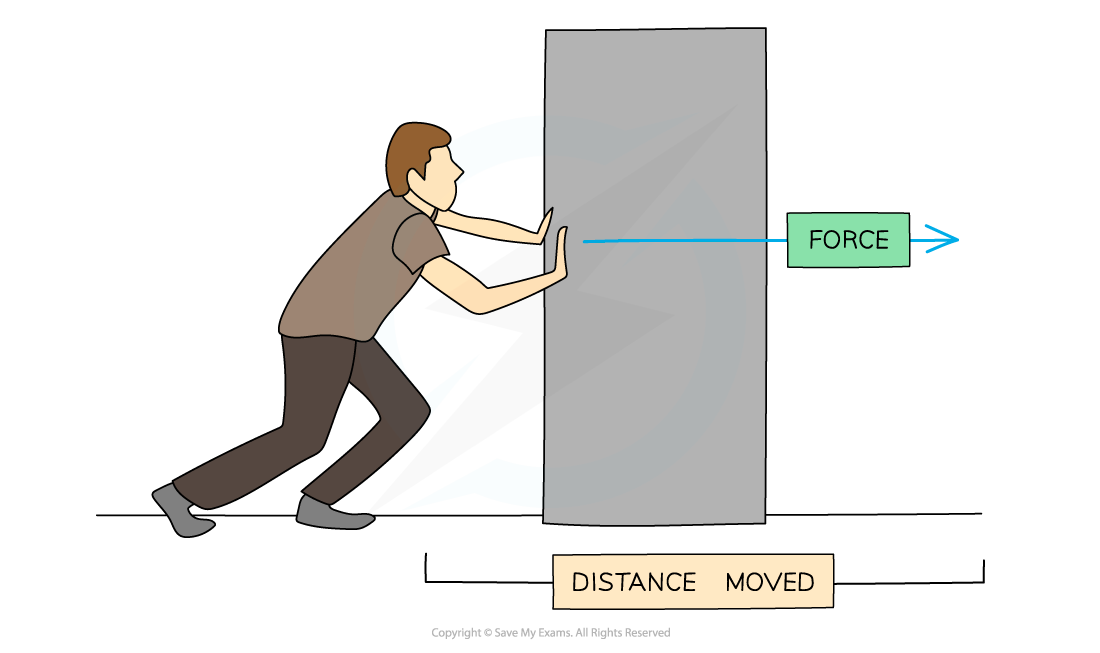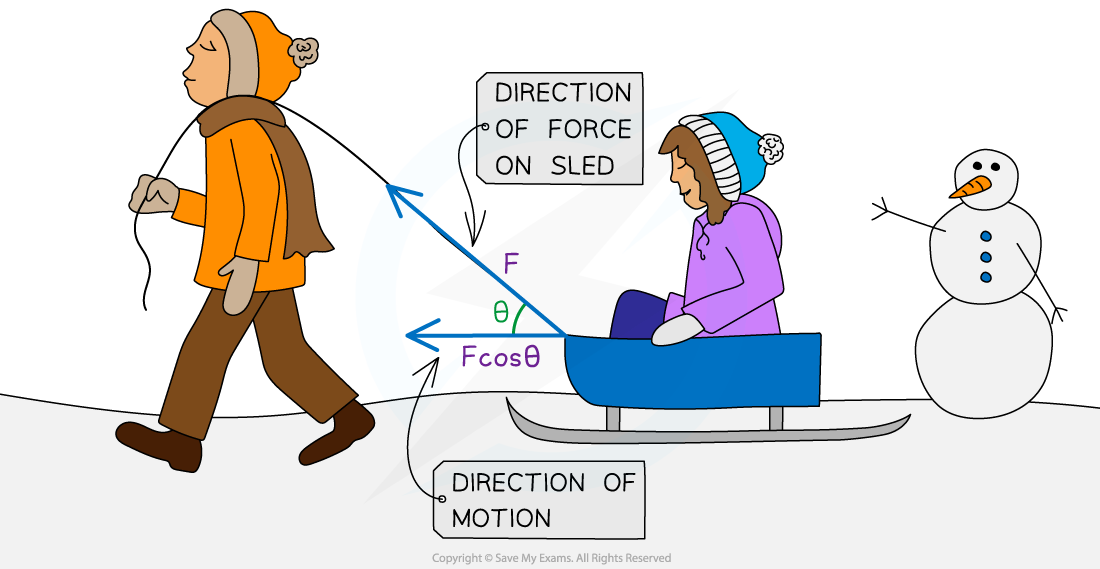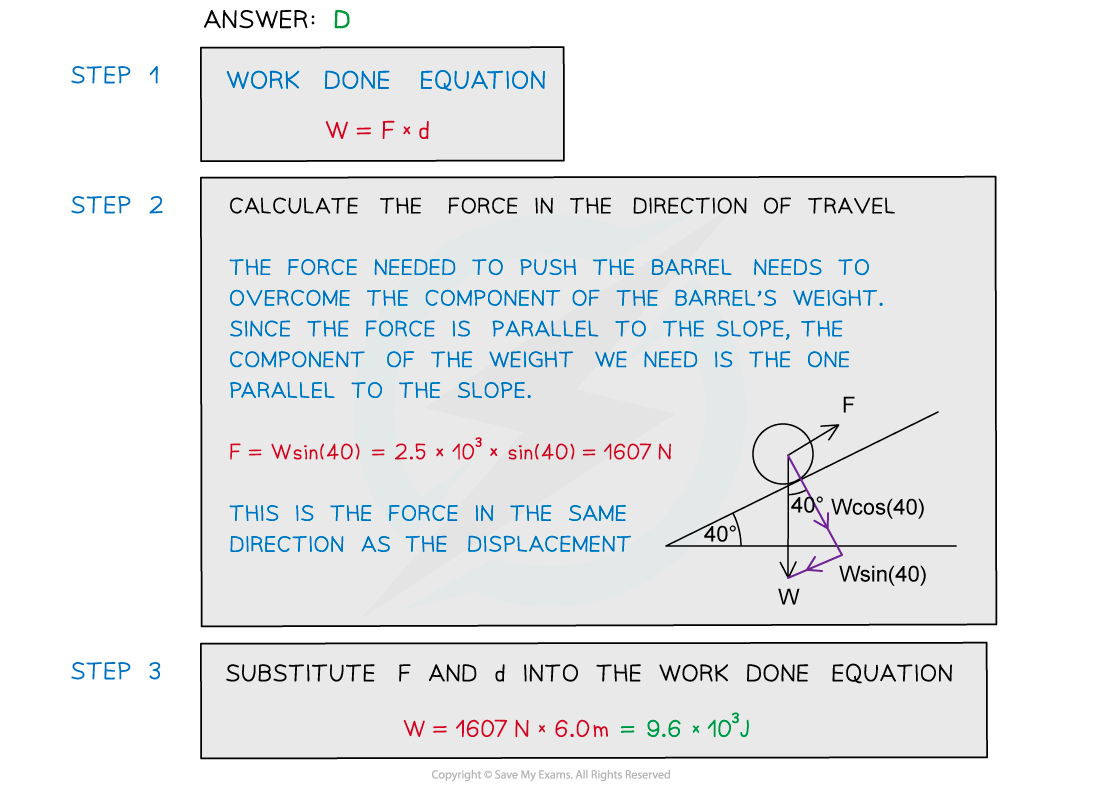Work Done (OCR AS Physics): Revision Note
Exam code: H156
Work Done
Work is defined as
The amount of energy transferred when an external force causes an object to move over a certain distance
If the force is parallel to the direction of the object's displacement, the work done can be calculated using the equation:
W = Fx
Where:
W = work done (J)
F = average force applied (N)
x = displacement (m)
In the diagram below, the man’s pushing force on the block is doing work as it is transferring energy to the block

Work is done when a force is used to move an object over a distance
When pushing a block, work is done against friction to give the box kinetic energy to move
The kinetic energy is transferred to other forms of energy such as heat and sound
Usually, if a force acts in the direction that an object is moving then the object will gain energy
If the force acts in the opposite direction to the movement then the object will lose energy
The Joule
The Joule, J, is commonly used as the unit of energy or work
The SI unit for energy is kg m2 s–2
One joule is defined as:
The energy transferred to (or work done on) an object when a force of 1 N acts on that object parallel to its motion through a distance of 1 m
Work Done Equation
Sometimes the direction of motion of an object is not parallel to the direction of the force
If the force is at an angle θ to the object's displacement, the work done is calculated by:
W = Fx cos θ
Where θ is the angle, in degrees, between the direction of the force and the motion
When θ is 0 (the force is in the direction of motion) then cos θ = 1 and W = Fx
This may not always be cos θ, since this is just for horizontal motion
For vertical motion, it would be sin θ
Always consider the horizontal and vertical components of the force
The component needed is the one that is parallel to the displacement

When the force is at an angle, only the component of the force in the direction of motion is considered for the work done
Worked Example
The diagram shows a barrel of weight 2.5 × 103 N on a frictionless slope inclined at 40° to the horizontal. A force is applied to the barrel to move it up the slope at a constant speed. The force is parallel to the slope. What is the work done in moving the barrel a distance of 6.0 m up the slope?
A. 7.2 × 103 J
B. 2.5 × 104 J
C. 1.1 × 104 J
D. 9.6 × 103 J

Examiner Tips and Tricks
A common exam mistake is choosing the incorrect force which is not parallel to the direction of movement of an object. You may have to resolve the force vector first in order to find the component that is parallel. The force does not have to be in the same direction as the movement, as shown in the worked example.

Unlock more, it's free!
Did this page help you?